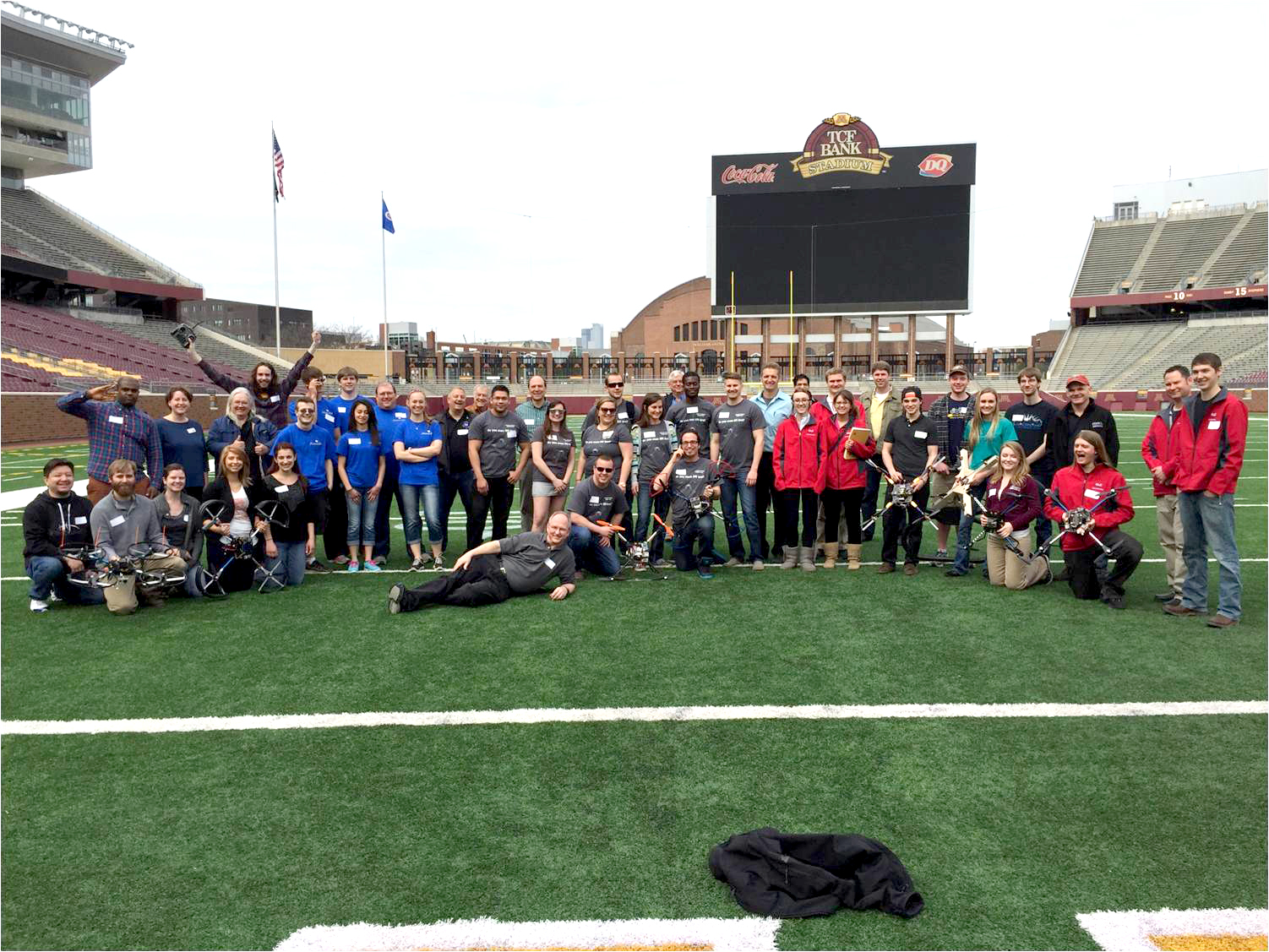AEM Hosts MnSGC Community College Quadcopter Competition
The Aerospace Engineering and Mechanics department hosted NASA's Minnesota Space Grant Consortium (MnSGC) Community College Quadcopter Competition on Thursday, April 16. The event is designed to (1) increase the number of community college students who graduate with Science, Technology, Engineering or Mathematics (STEM) degrees and/or transfer to STEM programs at four year institutions, (2) increase the ability of community college faculty members to deliver aerospace-related content in areas of interest to NASA, and (3) enhance the diversity of students pursuing STEM education at Minnesota community colleges.
"The competition is a great learning opportunity for the students," said David Voracek, Chief Technologist at NASA's Armstrong Flight Research Center. "And we learned a lot regarding future competitions, as well."
This year, seven student teams participated, each advised by a community college faculty member. The community college partners were Central Lakes College in Brainerd and Staples (North Central MN), Century College in White Bear Lake (Minneapolis/Saint Paul Metro Area), Fond du Lac Tribal and Community College located in Cloquet (North East MN), Minnesota West Community and Technical College in Worthington (South Western MN), and Itasca Community College in Grand Rapids (North Central MN).
"The teams were definitely challenged," said James Flaten, AEM Contract Assistant Professor and Associate Director of the MN Space Grant Consortium. "But they did a good job chipping away at the competition goals."
As part of the competition, teams are required to build and learn to fly an ELEV-8 quadcopter from a commercially available kit. Students also significantly modify their kits in order to mount sensors, actuators, and electronics necessary for the competition challenges. This involves some mechanical design and fabrication, giving the students experience with computer-aided design (CAD) software and 3D printing. In addition, students learn basic microcontroller programming and integration of electronics, sensors, actuators, and data-logging.
The competition "helped enhance teamwork and problem solving skills," said Clarice Blaisdell, a Fond du Lac Tribal and Community College student. "The competition provided a rich learning experience for our team," added Pam Myers, another Fond du Lac student. "It was an exciting opportunity."
Each team had to complete a set of challenges as part of the competition. The challenges included fielding at least three pilots to do basic flying, as well as using their camera(s) for close-up imaging of ground targets, wall targets, and for the purpose of drawing maps of an "exploration region." Teams added Arduino microcontrollers and sensors (temperature, pressure, magnetic field, etc.) to characterize the exploration region, looking for anomalies such as hot spots and hidden magnets. They were also asked to try to use their quadcopter to collect and return fluid and granular samples from within the exploration region.
"We hit a lot of unexpected challenges and had some learning experiences," said Sara Lawson, Century College student. "But we're also having a lot of fun!"
After the competition, students were split into three groups and taken on tours in the AEM department and Walter Library. Students visited the Akerman Wind Tunnel, the UAV Laboratory, and the Project Tango research lab in Walter Library, allowing them to learn more about aerospace, engineering and mechanics at the U of M.
For more information about MnSGC and the Quadcopter Competition, please visit: z.umn.edu/MnSGC



